Neil Cox – at the frontline of The Ocean Race where IMOCA teams are learning the stopover game
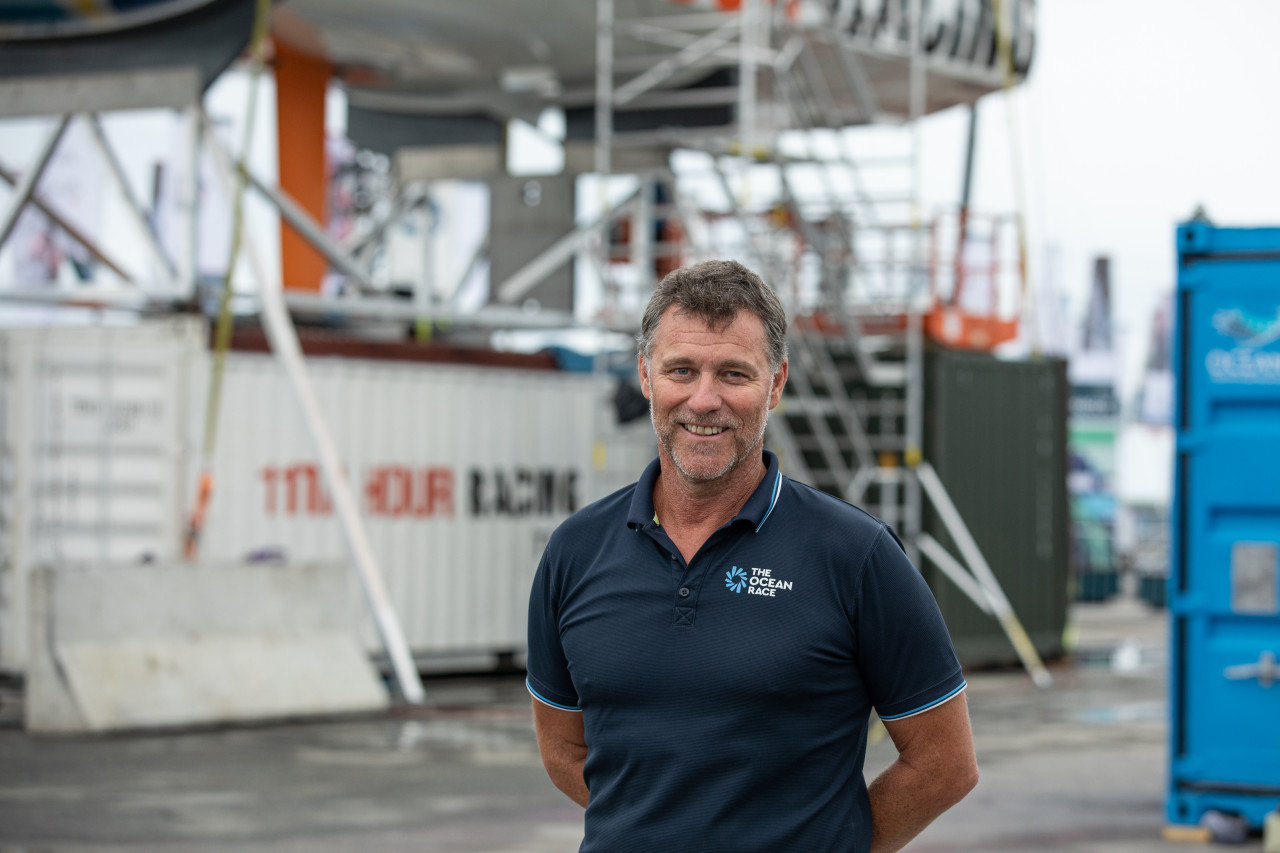
The Ocean Race is a new world for IMOCA teams and not just on the water. Anyone who has followed the Volvo Ocean Race and the Whitbread before it, knows that winning “the unofficial world championship of fully-crewed offshore ocean racing” requires a massive team effort both on the boats and on shore.
For IMOCA syndicates this presents completely new challenges. In the IMOCA GLOBE SERIES races, boats race from point-to-point and then return to base, or start and finish at the same port. The shore teams rarely work under acute time pressure with a race start – or re-start – just a few days away, when their boat needs to be in tip-top condition.
It is in this area that we are seeing the two worlds – the French school of solo and double-handed racing, and the more Anglo-Saxon tradition of the fully-crewed discipline with mid-race stopovers – coming together. And someone who is seeing this at close quarters is The Ocean Race’s technical director Neil “Coxy” Cox – a straight-talking 54-year-old Sydneysider who has been running shore teams or race operations with the event for more than 20 years.
Cox says the five IMOCA teams are all making the leap, but some are better resourced than others when it comes to all-important shore team support. “You can see them all stepping into this, and it isn’t the traditional way they normally do things,”he said from the dockside at Itajaí in Brazil, where all the teams are working on their boats ahead of the start of Leg 4 on April 23rd. “Some have stepped up to it really, really well while others are, not resistant to it, but it’s more a case of whether they have the resources to do it.”

Cox doesn’t name any names, but you get the impression from talking to him that for Charlie Enright’s 11th Hour Racing Team the stopover culture of The Ocean Race is second nature. Kevin Escoffier’s race-leading Holcim-PRB outfit and Boris Herrmann’s Team Malizia have fully embraced the challenge, while Biotherm and Guyot Environnement-Team Europe are less well-resourced.
Representing the race organization, Cox – who previously ran the full-fleet servicing Boatyard during the one-design VO65 era – sees his role in this edition as a facilitator. Using all his experience and contacts, he ensures that each team has everything it needs to enable it to hit the ground running at each stopover. This includes basics like dockside land space, power, water, and internet, to local contacts with companies supplying craning, forklifts and air freight. At Itajaí, Cox also oversaw the preparation of a berthing marina for the fleet, which involved a dredging operation.
“We get every facility in place for these guys to show up with their own assets,” he said. “It’s like trying to make sure they almost feel like they are arriving in Lorient every time they hit the ground, other than the fact that each location is culturally vastly different.”
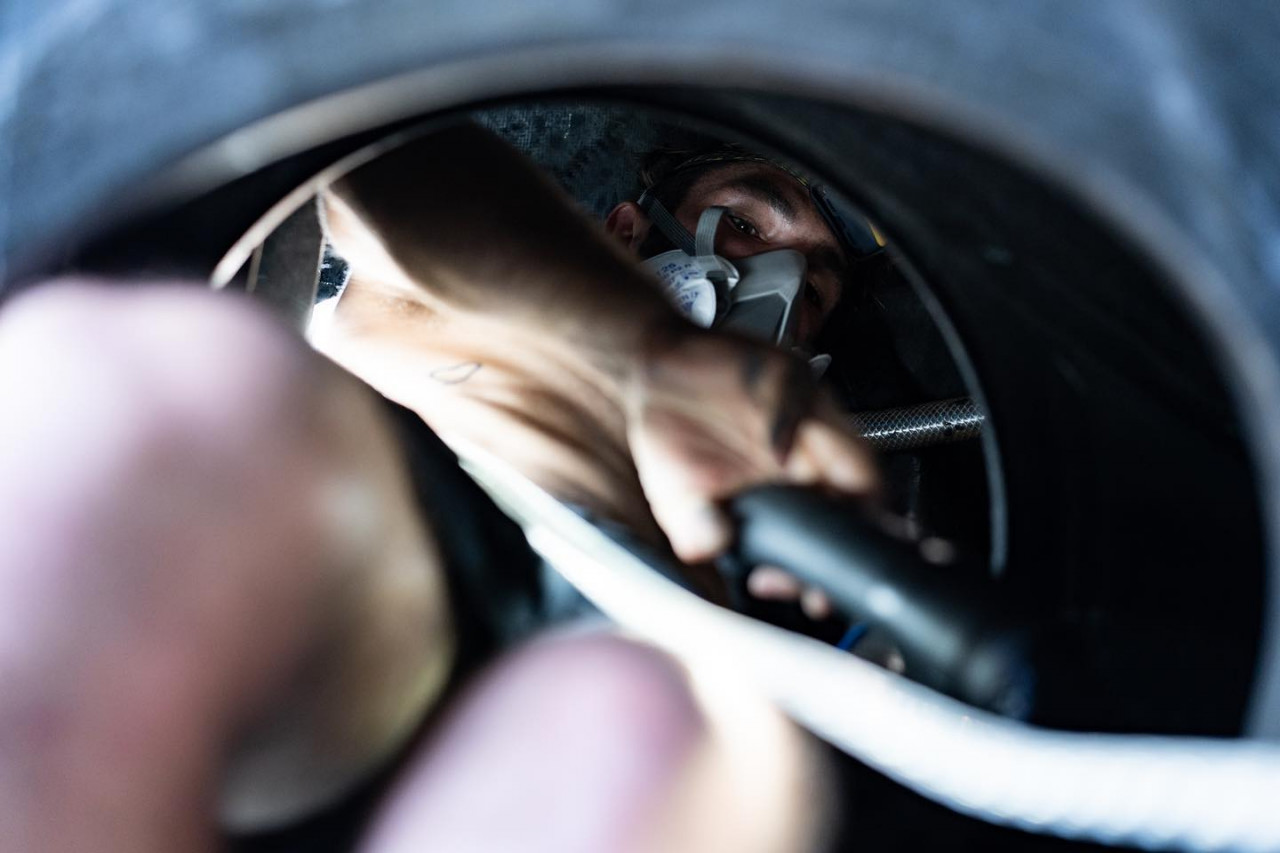
Cox knows better than anyone that getting the shore team element right in this race is critical to success. “It’s a total team effort to get through the whole race,”he explained. “To me it is the hardest yacht race in the world to win and the easiest to lose. Because at any level, or any layer, within the machine, something small can propagate into something that just costs points. And that can be on the boat offshore, or how things are managed onshore – in every race it is always an incredibly well-balanced team that is a strong performing team.”
After the 14,000-mile marathon from Cape Town, this stopover is fundamental to each team’s fortunes in this race. Cox says the condition that the boats leave Brazil, as they set sail for Newport, will go a long way to determining the eventual outcome. “How you leave here is truly how you set yourself up for the rest of the race, with Newport a non-haul-out stopover, and then you end up in Aarhus and the sprint through Europe. The core condition of your boat, as to how it leaves here, plays a huge role in how you go for the rest of the race,” he said.
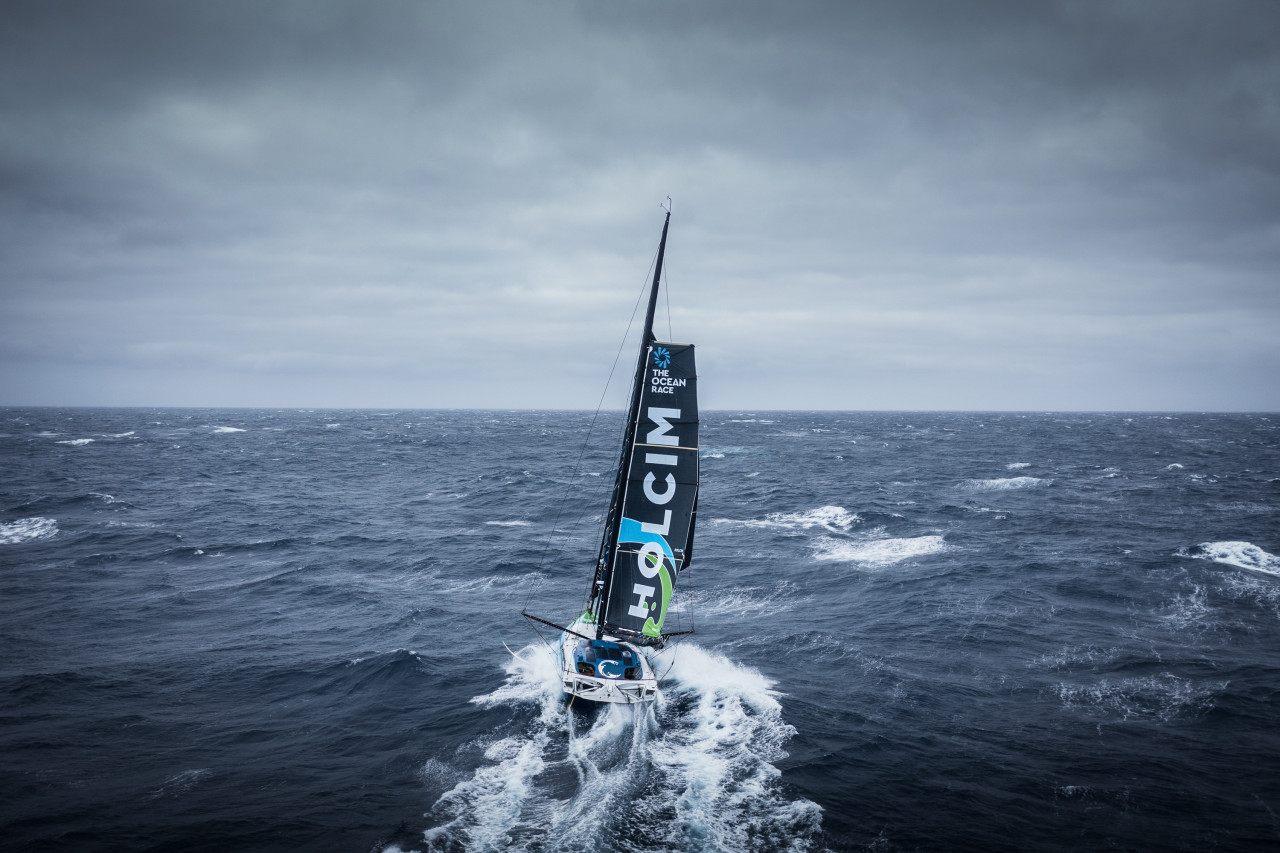
To put the shore team workload in Itajai into perspective, Cox points out that with the Volvo 70s and VO65 fleets, the boats would get a full service after every 10,000 miles. “These boats have just done 14,000 miles in one leg, so pretty much everything needs to be serviced,” he said laughing at the preposterousness of what these teams have just accomplished at sea.
Having working on the 70s and the 65s, Cox has been impressed by both the IMOCA sailing crews and the boats, which he says have turned up in Brazil without what he calls “show-stopping” maintenance issues, and in better shape than previous fleets that had arrived in South America after sailing less than half the race distance of Leg 3.
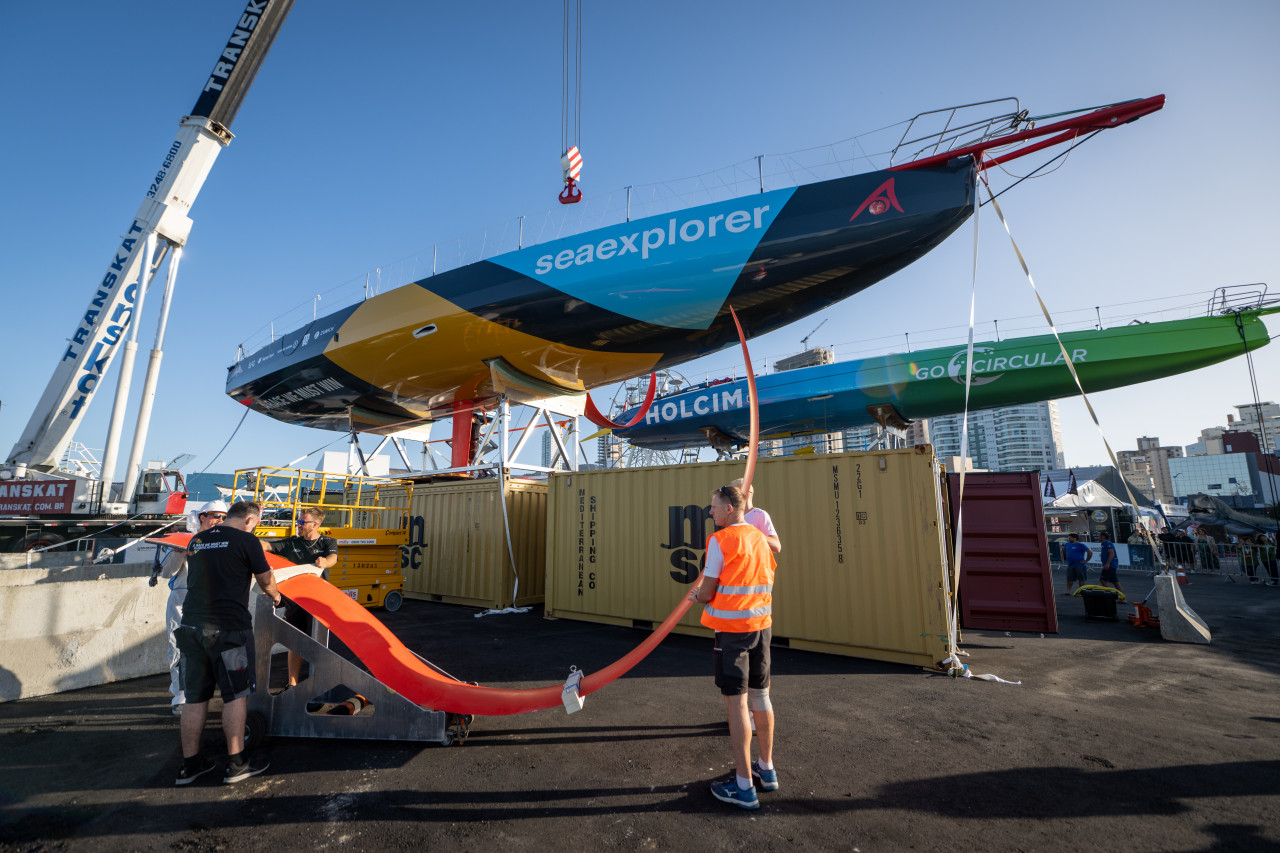 © Ricardo Pinto / Team Malizia
© Ricardo Pinto / Team Malizia
“I think the condition of the fleet here is a testament to the boats themselves, the design of the boats, the way they are maintained and the people sailing them,” he said. “Right now there is probably more re-hab and re-build required of some of the sailors than the boats. That’s what we keep not talking about – there are some pretty exhausted humans that have brought these boats 14,000 miles to here.”
Cox has no doubt that the skippers and sailors involved in this race will already have learnt how to sail their foilers at a level that they could not have reached as single-handers. He reckons the knowledge gained will be to their advantage in future short-handed races, but the lessons learned will also percolate through the Class. “You can see the performance curve increase in terms of what these boats are like single-handed compared to crewed, and the skippers have witnessed that, so anyone external to this would have to be paying attention,” he said. “There are definitely learnings for these guys which only they have now…but I think the greatest sharing of information will probably come from those here that have done it.”
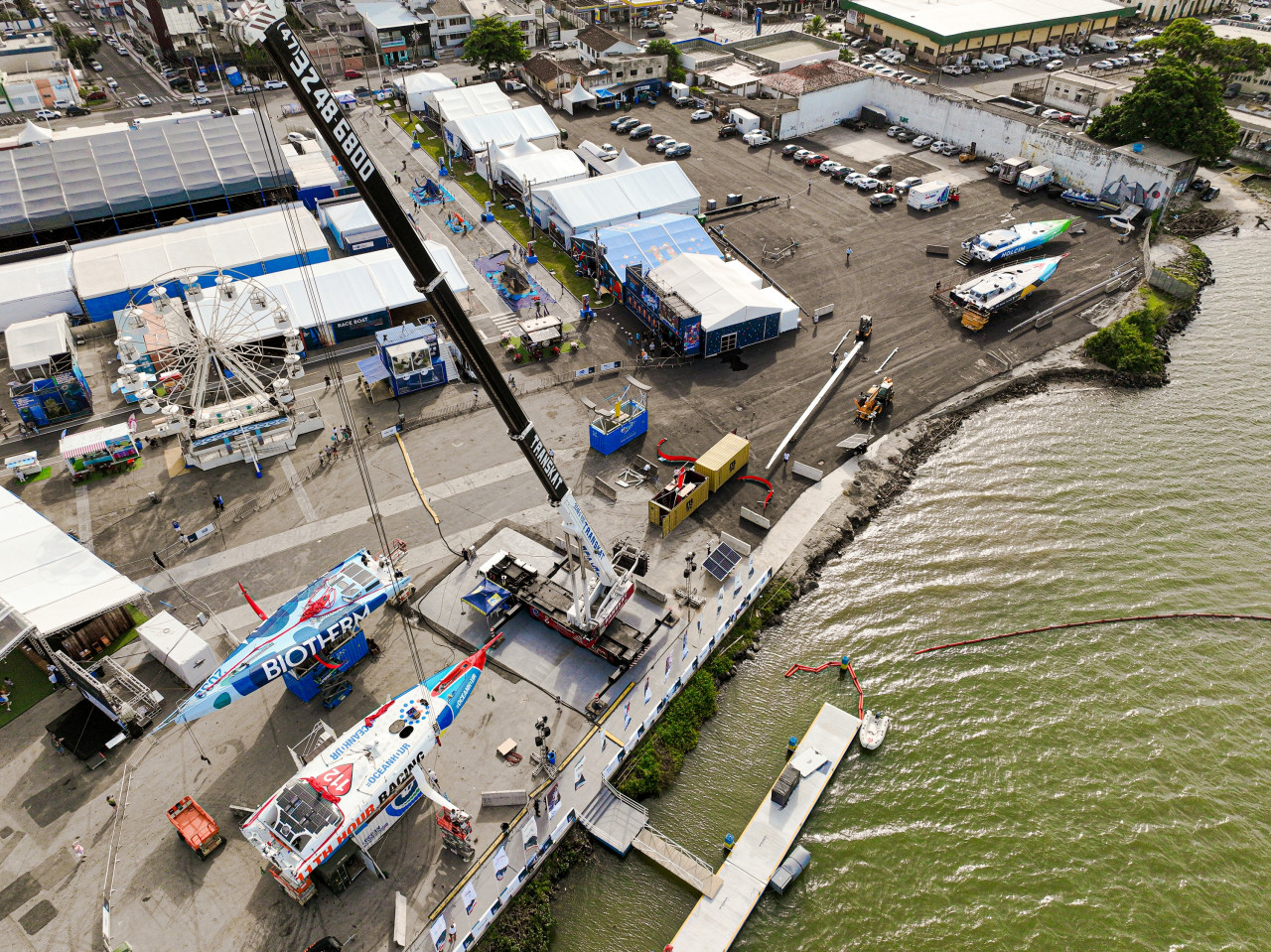 © Sailing Energy / The Ocean Race
© Sailing Energy / The Ocean Race
Cox believes that understanding the shore team culture of this event, is all part of the way that IMOCA is broadening its reach and expertise as a class and he is all for it. He says the roots of this merging of the French and Anglo-Saxon offshore worlds goes back some years.
“Everyone was off in their own world and we never really had the opportunity to blend, but the fact that we had canting keels on Volvo 70s, shows we were already looking over the fence at what was happening in France, where they were coming up with these fantastic ideas for performance offshore boats. So there has always been that connection and respect for what was going on there. Now it is starting to mesh a bit and the reality is that the more we can start to get a bit more internationalisation of the fleet, the more that will benefit everyone, especially from a commercial point of view,” he said.
En ce qui concerne les bateaux, Coxy a tout vu. Nous lui avons demandé s'il pensait que les IMOCA étaient la flotte la plus cool qu’il ait vue sur la course. Voici ce qu'il a répondu : « Oui, ils sont assez uniques, c'est certain. Les Volvo 70 étaient déjà des machines incroyables, mais les IMOCA sont encore à un niveau au-dessus. On se demande où on peut encore aller. C’est sûr que ces bateaux demandent beaucoup de travail, tant pour la navigation que pour l'entretien. Il y a une raison à cela et c'est uniquement une question de performance ».
Ed Gorman (traduit de l’anglais)
Teams info
IMOCA becomes the first class in sailing to impose an impact reduction rule on boat construction
An impact reduction rule limiting harmful emissions in boat construction has been the major goal of the sustainability work that IMOCA has been conducting over the last four years and now it is being implemented.
•••ALL ACCESS #2 | CLARISSE CRÉMER
Let's dive into the thrilling preparations for the Vendée Globe. For the IMOCA skippers, the year 2024 holds paramount importance, marking the culmination of their efforts. Sailing around the world solo is their ultimate…
•••